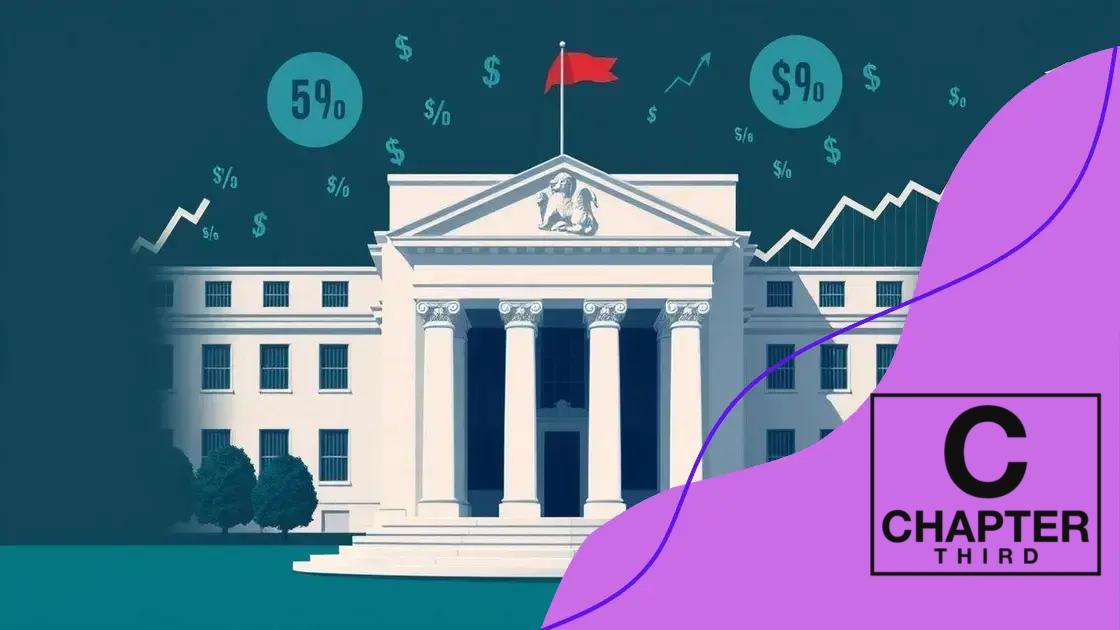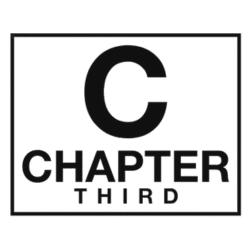Fed explores rate hikes: what it means for you

Rate hikes by the Federal Reserve increase borrowing costs, reduce consumer spending, and can slow down economic growth, making it essential for individuals and businesses to adapt their financial strategies accordingly.
Fed explores rate hikes and many are left wondering what it means for their financial future. With potential changes on the horizon, how could your budget, savings, and investments be affected? Let’s find out.
Understanding recent Fed announcements
Recent announcements from the Fed are making waves in the financial world. Understanding these updates is key to navigating your finances effectively. The Fed’s decisions influence interest rates, impacting everything from loans to mortgages.
What are the recent announcements?
The Fed has indicated that rate hikes may occur in the near future. This means that the cost of borrowing could increase, leading to higher monthly payments on loans. It’s a signal that the economy is responding to inflation concerns and seeks to stabilize financial markets.
Implications for everyday borrowers
For most people, higher interest rates mean potential increases in their debt costs. Here are a few ways this can affect you:
- Your mortgage rates could rise, increasing monthly payments.
- Credit card interest rates may also go up, affecting how much you pay on outstanding balances.
- New loans will be more expensive, impacting large purchases like vehicles.
Staying informed is vital as these changes unfold. As rates fluctuate, keeping an eye on your current loans and future borrowings can help in budgeting better. Monitoring Fed announcements can provide critical insights into how to adjust your financial plans.
Investors are also closely watching these developments. Increased rates can lead to adjustments in the stock market as investors shift their strategies. Understanding the Fed’s next moves can help you make sound investment choices.
What to watch for moving forward
Pay attention to further announcements and potential economic indicators. This includes assessing inflation rates, employment figures, and economic growth metrics. All these factors contribute to the decisions made by the Fed.
How rate hikes affect your loans
When interest rates rise, the effects are felt by many, especially those with loans. Understanding how rate hikes affect your loans is crucial for managing your finances wisely. Rates influence loan costs and can change your monthly payments significantly.
Understanding loan types
Different types of loans react differently to rate hikes. For instance, fixed-rate loans remain unchanged during the loan term, while variable-rate loans will see increases directly tied to the Fed’s actions. This means that your payments may go up shortly after the Fed raises rates.
Impacts on monthly payments
When the Fed raises rates, monthly payments on variable loans can quickly escalate, making repayments more challenging for many borrowers. Here’s how:
- Higher interest can lead to larger payments on personal loans.
- Home equity lines of credit may become more expensive to service.
- Credit cards with variable rates will charge more interest.
As a result, borrowers need to be strategic. Refinancing a variable loan to a fixed rate might be a smart move before rates climb further. Furthermore, budgeting for increased costs is essential in this environment.
Prepare for increased expenses by assessing your current loans and exploring options to minimize impacts. Many financial advisors recommend taking inventory of outstanding debts and planning your repayments carefully. The goal is to avoid financial strain as interest rises.
Considering future financial plans
Even if you’re not currently looking to take on new loans, staying informed about rate changes can impact your future borrowing decisions. Higher rates mean evaluating whether to make large purchases now or wait until conditions are more favorable. Keeping an eye on market trends allows you to make informed choices and positions you better for your financial future.
The impact on savings and investments

The impact of rate hikes on savings and investments is significant and multifaceted. When the Federal Reserve raises interest rates, it directly affects the returns on various savings accounts and investment options. Understanding these changes can help you make informed financial decisions.
Effects on savings accounts
Typically, higher interest rates can lead to increased rates on savings accounts. This means that banks might offer better returns for your savings, allowing your money to grow faster. It’s essential to compare accounts and find the best deals that maximize your earnings.
Impact on investment returns
Investments are also influenced by rate hikes. Here are some key aspects:
- Bond prices often fall when rates rise. This is because new bonds will be issued at higher rates, making existing bonds with lower rates less attractive.
- Stock prices can be volatile. Higher rates might dampen corporate profits, which can lead to declining stock values.
- Real estate investments can slow down as higher mortgage rates can decrease demand for new homes.
As interest rates increase, evaluating your investment portfolio becomes more critical. It might be a good time to reassess your asset allocation to account for changing market conditions.
Additionally, while savings accounts benefit from increased rates, they might not always outpace inflation. Thus, it’s crucial to stay informed about overall economic conditions and adjust your financial strategies accordingly. A balanced approach will help you navigate these changes effectively.
Strategies to adapt
Consider diversifying your portfolio by including a mix of stocks, bonds, and alternative investments. This strategy can help mitigate risks associated with changing interest rates. Regularly reviewing your investments and being proactive can enhance your financial stability in this evolving landscape.
Expert opinions on future rate changes
Understanding expert opinions on future rate changes can provide valuable insights into what to expect in the coming months. Financial analysts and economists closely monitor economic indicators to forecast how the Federal Reserve might adjust interest rates.
Current economic conditions
Experts agree that current inflation levels are a major factor influencing rate changes. With inflation remaining above the Fed’s target, discussions are ongoing about the need for additional hikes. This means borrowers and investors should stay alert to potential announcements that could affect their financial strategies.
Predictions from analysts
Analysts currently anticipate a mixed approach. Some predict gradual increases, while others warn of rapid changes if inflation persists. Here are some key points noted by experts:
- Expected adjustments to the interest rate could impact both consumer borrowing and investment.
- The Fed may consider pausing rate hikes if economic growth slows.
- Future rate changes will heavily depend on employment statistics and consumer spending trends.
This variability requires both borrowers and investors to be adaptable. Seeking advice from financial advisors can help you navigate these uncertain times. Having a diversified portfolio may also reduce risk as interest rates fluctuate.
In conversations about the future, many experts emphasize the importance of staying informed. Regularly reviewing economic reports and updates from the Fed will position you better to make sound financial choices.
What this means for the economy
The recent rate hikes have profound implications for the economy. Higher interest rates influence consumer behavior, corporate investments, and overall economic growth. It’s important for individuals and businesses to understand these changes and how they may affect future decisions.
Consumer spending slowdown
When interest rates rise, borrowing costs increase. This often leads to a decrease in consumer spending, as individuals are less likely to finance large purchases. With more money going towards paying interest on loans, families may cut back on discretionary spending. This is crucial for businesses that rely on consumer spending for revenue.
Investment and business growth
Higher rates can also deter businesses from taking out loans to expand or invest in new projects. This hesitation can hinder economic growth. Here are some points to consider:
- Businesses may delay investments in infrastructure and staff.
- Startups may struggle to secure funding, impacting innovation.
- Existing companies might focus on paying down debt rather than expanding.
As a result, slower investment can lead to stagnation in job creation and wage growth, having a ripple effect throughout the economy.
Long-term economic outlook
While higher interest rates can help control inflation, they can also slow down economic activity. This balancing act is critical; if rates stay high for too long, it could lead to a recession. Monitoring indicators like GDP growth, unemployment rates, and inflation levels will be essential for understanding the broader economic landscape.
Ultimately, staying informed about these developments will help individuals and businesses prepare for potential shifts in the economic environment. Being proactive in adjusting financial strategies can mitigate negative effects.
FAQ – Frequently Asked Questions about Rate Hikes and Their Impact
How do rate hikes affect my monthly loan payments?
Rate hikes typically increase your monthly loan payments, especially if you have variable rate loans, making borrowing more expensive.
Will higher interest rates slow down the economy?
Yes, higher interest rates can reduce consumer spending and business investments, which may slow down economic growth.
How should I adjust my financial strategies with rising rates?
Consider reviewing your loans, refinancing to fixed rates if possible, and diversifying your investments to mitigate risks.
What indicators should I monitor regarding future rate changes?
Keep an eye on inflation rates, unemployment figures, and economic growth metrics, as these factors influence the Fed’s decisions.






